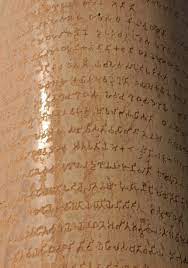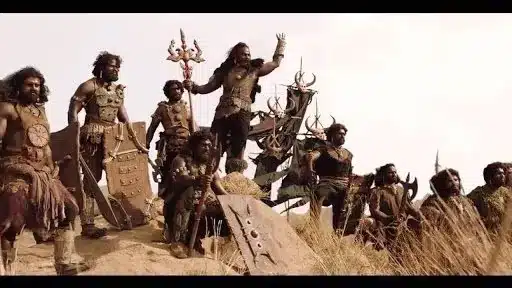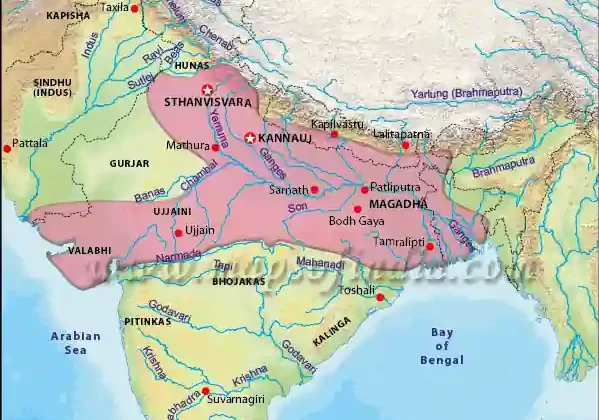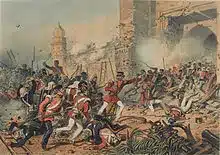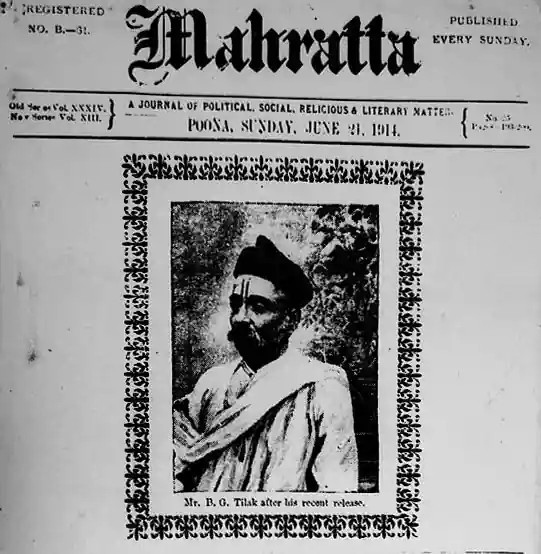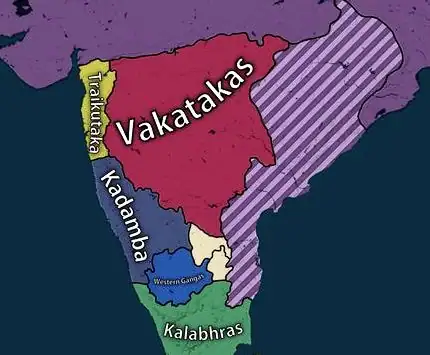Introduction of Indus Valley Civilization
- Indus valley civilization is one of the four earliest civilizations of the world along with the Mesopotamian civilization along the Tigris and Eupharates, the Egyptian civilization along the Nile and the Chinese civilization along the Hwang Ho.
- The Bronze Age Indus Valley Civilization or Harappan Civilization was the culmination of a long and sustained cultural evolution in the Indus Valley and surrounding areas.
- The term “Indus Valley Civilization” was used by John Marshall for the first time.
- The people of this civilization were definitely in touch with the other civilizations especially with Mesopotamian civilization.
Extent of the Civilization
- Centre of the civilization was in Sind and Punjab and from there, it spread in all directions.
- Its westernmost point was Suktagendor in South Baluchistan while easternmost point was Alamgirpur in Meerut district of Uttar Pradesh.
- In North, it extended Afghanistan while in South, its extent was up at least Maharashtra state.
- This civilization was largest of the four ancient urban civilizations of Egypt, Mesopotamia, South Asia and China and covered an area of around 1.3 million square kilometers.
- This area is triangular in shape and no other ancient civilization was extended to such a large area.
Origin and Period of the civilization
- The Indus civilization belongs to the Bronze Age.
- It is older but more developed than the Chalcolithic cultures in the subcontinent.
- Some people call Indus Valley people as Proto-Dravidians, who might have been pushed to south in mature Harappan phase when Aryans, with their advanced military skills commenced their migration around 2000BC.
- All settlements are found in different phases:
- Early Harappa phase : 2900 – 2500 BC
- Middle or Mature Harappa phase : 2500 – 2000 BC
- Late Harappa phase : 2000 – 1700 BC
Important Sites Of Indus Valley Civilization
Salient Common Features of Entire Civilization
- The first common feature is Indus script on seals. This script has not been deciphered yet.
- The second most important feature is town planning. The main features of town planning were use of baked as well as sundried bricks, well planned straight roads and a system of drainage.
- Most urban centres had a fortified citadel.
- A house held a kitchen, well or a water reservoir.
- Use of standard weights and measurement has been found throughout the civilization.
- They used to make pottery on wheels.
- They used to bury the dead.
Geographical Factors which helped the growth of this Civilization
- The Indus seals are found to have figures of a variety of plants and animals which can exist only in moderately wet, conditions. Therefore, it is assumed that the climatic conditions were quite moderate.
- Added to this, the vast plains along the Indus were very fertile. The floods deposited rich alluvial soil on these plains every year and irrigated the lands. These geographical factors greatly helped the prosperity of Indus habitations.
Town Planning
- The Harappan culture was distinguished by its system of town planning on the lines of the grid system that is streets and lanes cutting across one another almost at right angles thus dividing the city into several rectangular blocks.
- Harappa, Mohenjodaro and Kalibangan each had its own citadel built on a high podium of mud brick. Below the citadel in each city lay a lower town containing brick houses, which were inhabited by the common people.
- The large-scale use of burnt bricks in almost all kinds of constructions and the absence of stone buildings are the important characteristics of the Harappan culture.
- Another remarkable feature was the underground drainage system connecting all houses to the street
drains which were covered by stone slabs or bricks. - The most important public place of Mohenjodaro is the Great Bath measuring 39 feet length, 23 feet breadth
and 8 feet depth. Flights of steps at either end lead to the surface. There are side rooms for changing clothes. - The floor of the Bath was made of burnt bricks. Water was drawn from a large well in an adjacent room, and
an outlet from one corner of the Bath led to a drain. It must have served as a ritual bathing site. - The largest building in Mohenjodaro is a granary measuring 150 feet length and 50 feet breadth. But in
the citadel of Harappa there were six granaries.
Administration
- Cities are the symbols of the Indus Valley civilization characterized by the density of population, close integration between economic and social processes, tech-economic developments, careful planning for expansion and promotion of trade and commerce, providing opportunities and scope of work to artisans and craftsmen etc.
- This was a sort of urban revolution, which could not have been possible without the strong central authority, specialized economic organization and socio-cultural unity.
- The size and architectural complexity of all large Harappan cities mean something in terms of a socio-cultural development. The lay-out of the streets, the presence of a large-scale drainage system with its requirement for constant tending, the monumental citadels, all can be taken as an indication of tendencies toward a strong central government.
- Another feature of Harappan urbanization was the elaborate craft specialization and the contacts with other reasonably distant parts of asia. But the greatest challenge to the archaeologists is their failure to get any idea of the Harappan urban institutions. For example, we almost know nothing about the form of the state and the economic institutions.
- Maritime commerce with Mesopotamia was a part to their life, but the knowledge of inner working of these complex Harappan urban economic institutions completely eludes us.
Polity
- Uniformity in material culture visible in such features as town planning, trade and commerce, weights and measures, etc. suggests a centralized political control.
- Again the presence of great granaries on the citadel mounds and the citadels themselves point towards the presence of a political authority.
- Possibly, Harappa was ruled by a class of Merchants.
Agriculture
- The extensive use of burnt-bricks, for the firing of which plenty of wood was needed, and the frequent depiction of flora and fauna on the seals suggest a good rainfall.
- Wheat and barley were the main food-crops besides, rais, peas, sesamum, mustard, rice (in Lothal), palm date, banana, etc.
- The evidence of culivation of rice comes from Lothal and Rangpur only.
- No canal or channel irrigation but ‘gabarbands’ or reservoirs have been found. Furrow marks have been discovered only at Kalibangan.
- It seems seeds were sown on flood plains in November and reaped in April.
- Perhaps stone stickles were used for harvesting.
- Despite being a pre-field cultivation, it had a surplus production.
- Wheat and barley were the staple food and to the dietary were added fish, fowl, mutton, beef and pork.
- Harappans were the first to discover cotton and grew it for textiles – a crop unknown in those times in Egypt.
- Because cotton was first produced in this area the Greeks called it ‘Sindon’, which is derived from Sindh.
- They domesticated animals on large scale.
- Besides cats and dogs, oxen, buffaloes, goats, ship, pigs, and probably elephants were also domesticated.
- Remains of horse at Surkotda and dogs with men in grave at Ropar have been discovered. The evidence regarding horse and camel is inconclusive.
Script
- The Harappan script has still to be fully deciphered.
- The number of signs is between 400 and 600 of which 40 or 60 are basic and the rest are their variants.
- The script was mostly written from right to left. In a few long seals the boustrophedon method – writing in the reverse direction in alternative lines – was adopted.
Social Life
- Social classes: The fact that there were different types of houses indicates that there were different social classes. Trading being the major activity, the merchants seem to have formed the upper class. The artisans and farmers might be the common people.
- Dress:
- A figure of a bearded man has been found in Mohenjo-Daro which indicated that they used sewn clothing’s. The cloth used to cover the torso in the upper part of the body in such as way that it kept right hand Free.
- There are evidences that they people took interest in cosmetics and had great aesthetic sense. Men kept long hair and kept bread or also shaven beard.
- The people of Indus valley civilization were aware of Bronze mirrors, Ivory Combs, antimony rods but NOT hair dyes.
- Ornaments: The Harappans used a large variety of materials, from precious metals and gemstones to bones and even baked clay, to make ornaments. Both men and women wore ornaments like necklaces, fillets, armlets and finger rings. Girdles, earrings and anklets were worn only by women.
- Recreation and amusements: The people of Harappa seem to have had a great liking for dance and music. They were also familiar with indoor games like dice. A large number of terracotta toys were found in Mohenjodaro.
Sports and Entertainments:
- The large number of terracotta figurines and toys such as cart, bull, elephant, monkeys, chariots; whistles etc. indicate that the children entertained themselves.
- There are no clear evidences of Music in the civilization; however, the finding of a dance girl bronze figurine gives some insight about the social entertainment.
- The figure of a dancing girl from Mohenjodaro made of bronze is remarkable for its workmanship. Its right hand rests on the hip, while the left arm, covered with bangles, hangs loosely in a relaxed posture.
Tools, arms and weapons:
- They are made up of Copper and Bronze.
- They were unaware of the use of Iron.
Economy, Trade and Commerce
- Economy was mainly agrarian but heavily supported by trade and commerce.
- Both internal and external trade was much brisk.
- There was no metallic money.
- Medium of exchange was barter system.
- The seals seem to be of merchandise importance.
- Trade was undertaken both by land and sea route.
- Ships and carts with solid wheel were chief means of transportation.
- Uniformity in weights and measures and in material culture suggest trade within the Indus empire.
- The Indus people did not possess the necessary raw materials for the commodities they produced.
- In return for finished goods like ivory, carnelian beads, shell goods, cotton fabrics, and possibly foodgrains and spices, they procured metals from the neighbouring areas.
Foreign Affairs
- It has been established that this civilization had relationships with Mesopotamia civilization. In various cities of Mesopotamia, the harappan seals have been found which prove these relationships.
- The description of Meluha in the Mesopotamian literature refers to India. The Mesopotamian records mention the word Meluha for Indus region. The ancient name of the river Indus was Meluha.
Religious Practices
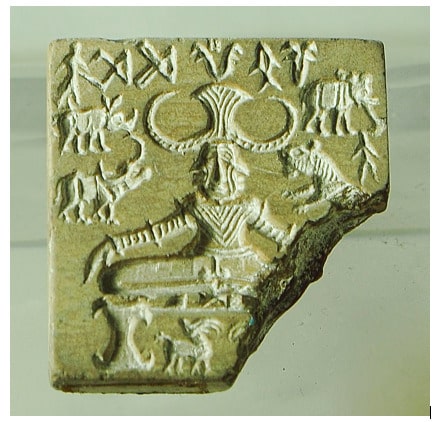
- We do not have any specific information about the religious beliefs of the Harappan people. However, on the basis of archaeological finds we can come to certain conclusions.
- No temples have been found from any of the Harappan sites.
- Figurines resembling a female deity have been found.
- This has a lot of similarities with Shiva. From this it is figured that the Harappans might be worshipping Shiva.
- Most prominent religious figures are Unicorn, Pashupatinath, Seven mothers (sapta matrika) and compound creatures. The later three are now inculcated in Hindu religion.
- The mother goddess was dominant shows that the society was predominantly matriarchal.
- There was a division of labour and society was diversified and stratified. The people were scholars, artisans, traders, warriors and businessmen.
- Protoshiva or Pashupati
- This representation has at least three concepts which are usually associated with Shiva viz., that he is (i) Trimukha (three-faced), (ii) Pashupati (Lord of animals), and (iii) Yogisvara or Mahayogi. The first two aspects are apparent from the seal itself.
- The deity is sitting cross-legged in a Padmasana posture with eyes turned towards the tip of the nose which evidence the Yogisvara aspect of the deity. The deity is always nude save for a cincture round the waist.
- This deity is surrounded by 4 wild animals and this gives an indication that it is Pashupatinath or a prototype of Lord Shiva.
- The 4 animals viz. an elephant, a tiger, a buffalo and a rhinoceros. Apart from this there 2 deer’s beneath the seat of the deity.
- The headdress of the deity has two horns. It wears as number of bangles and has a pectoral round the neck, and an inscription of seven letters appears at the top.
- Linga Worship
- Stone symbols of both male and female sex organs have been found which gives in indication that Phallus or Linga worship was in practice.
- Tree Worship and other rituals
- The peepal tree has been depicted on many seals which gives a sense that it might be a sacred tree.
- Humped bull was a venerated animal and there are evidences of snake worship and snake charmers.
- Practice of fire cult evidenced from Lothal and Kalibangan may suggest ritual sacrifice.
- Swastika was a sign of good luck. Portrayal of crocodiles on some seals may symbolize river god.
- The elaborate bathing arrangement at the city of Mohenjodaro suggest that religious purification by bath formed a feature of the Indus Valley people.
- Amulets and charmers found in large number suggest superstition and belief in demons and ghosts.
Science & Technology
- The Harappan civilization was the womb of mathematics from where both the concept of numbers and the numerical system originated.
- These people are known to have constructed the world’s first tidal port at Lothal at the head of the gulf company.
- They possessed a high degree of knowledge relating to the ebb and flow of tides and carried on brisk overseas trade with other civilizations.
- They were also conversant with the medical sciences and used various herbs and drugs to treat diseases. The people of Indus valley Civilization practiced Trephination which is kind of medical intervention making a burr hole in the skull to treat migraines and mental disorders. The evidences of Trephination have been found at Lothal, Kalibangan and Burzahom but not at Harappa or most other sites.
Weights & Measures
- The use of weights (in a binary system) and measures proves that the Indus people knew arithmetic.
- Cubical weights of charts were commonly used.
- For smaller weights binary system in progression was used like 1, 2, 4, 8, 16, 32 going up to 160 and decimal ratio in progression was used for larger weights, viz. 320, 640, 1600, 3200, 5400, 8000 and 12800.
- A terracotta-graduated scale is found in Kalibangan.
Food:
- Both veg and nonveg life.
- There are evidences of cultivation of Wheat, Barley, Rice, Date, melon, lemon etc.
- people were cattle herders and used milk and milk products. There are evidences that people made sweets. Half burnt bones give evidence of nonveg life.
Burial Practice
- Surkotda and Dholavira are two sites where the burial practice resembled the megalithic burial practice.
- Burzhahom is a Neolithic site and here practice of burying dogs with the masters was common.
- Complete burial and post-cremation burial were popular at Mohenjodaro.
- The dead bodies were placed in the north-south direction.
- At Lothal the burial pit was lined with burnt bricks indicating the use of coffins.
- Wooden coffins were also found at Harappa.
- The practice of pot burials is found at Lothal sometimes with pairs of skeletons.
Architecture in Harappan Civilisation
- The towns were laid out in a rectangular grid pattern. The roads ran in north-south and east-west direction and cut each other at right angles.
- Mainly three types of buildings have been found in the excavation sites – dwelling houses, public buildings and public baths.
- The Harappans used burnt mud bricks of standardised dimensions for the purpose of construction.
- Many layers of well-baked brick were laid out and then joined together using gypsum mortar.
- The city was divided into two parts–An upraised citadel and the lower-part of the city.
- An upraised citadel in the western part was used for constructing buildings of large dimensions, such as granaries, administrative buildings, pillared halls and courtyard. Some of the buildings in the citadel might have been the residence of the rulers and aristocrats. However, Indus Valley Civilisation sites do not have large monumental structures such as temples or palaces for rulers unlike Egyptian and Mesopotamian Civilisation.
- The granaries were intelligently designed with strategic air ducts and raised platforms which helped in storage of grains and protecting them from pests.
- An important feature of the Harappan cities is the prevalence of public baths, which indicate the importance of ritualistic cleansing in their culture.
- The most striking feature of Harappan Civilisation is the advanced drainage system. Small drains ran from each house and were connected to larger drains running alongside the main roads.
Seals
- The seals were used throughout the length and breadth of this civilization. Made of steatite, these seals range in size from 1cm to 5cm.
- The most remarkable one is the Pashupati seal depicting shiva seated on a stool flanked by an elephant, tiger, Rhinoceros and buffalo. Below the stool are two antelopes or goats.
- On one seal a goddess stands nude between the branches of a pipal tree, before which kneels a worshipper. Behind the worshipper stands a human faced goat and below are seven devotees engaged in a dance.
- A scene very often repeated on seals shows a man holding back two roaring tigers with his out-stretched arms. This is similar to the Sumerian Gilgamesh and his lions.
- The animal most frequently encountered on Indus seals is a humpless bull, shown in profile with its horns superimposed on each other and pointing forward. For this feature it has generally been called a unicorn.
Metallurgy
- These people were aware of Gold, Silver, Copper, Brass, Bronze and Tin but did not know much about Iron.
- Copper was the most widely used metal.
Bronze Figures:
- The Harappan Civilisation saw a wide scale practise of bronze casting. The bronze statues were made using “lost wax technique” or “Cire Perdue”.
- In this technique, wax figures are first coated with wet clay and allowed to dry.
- The clay coated figures are then heated, allowing the wax inside to melt. The wax is then poured out through a tiny hole and liquid metal is poured inside the hollow mould. After the metal has cooled down and solidified, the clay coat is removed and a metal figure of the same shape as the wax figure is obtained. Even now, the same technique is practiced in many parts of the country.
- Examples:Bronze Dancing Girl of Mohenjo-daro, bronze bull of Kalibangan, etc.
Pottery
- A large variety of pottery, both plain and decorated, has been found.
- Harappanwares were shaped on a potter’s wheel. The potters wheels, being made of wood, have not survived.
- The kilns in which the pots were baked have been unearthed. The heating was skilfully controlled as most of the pottery was carefully fired. Once the vessel was shaped on the wheels, the ochre was painted over it. Then the designs were painted on this red surface with a brush in black.
- The black colour was derived from magniferous haematite.
- At lothal a vase a painting probably depicting the folk tale the thirsty crow and on another jar from the same site has identified the depiction of the folk tale the cunning fox.
Decline
- The Harappan Culture lasted for about a thousand years and collapsed by about 1800 BC.
- This coincides with the advent of the Aryans in India.
- The exact reason for the decline of this civilization is not known.
- These cities might have got destroyed in conflicts with the Aryans.
- But the generally accepted view among historians is that a gradual change in climatic conditions rendered the region inhospitable and caused its decline.
- Some people also believe that natural calamities like floods or earthquakes might have caused its destruction.
Also refer :
- Important MCQs From the History Of Ancient India
- प्राचीन भारतीय इतिहास के 50 महत्वपूर्ण प्रश्न
- मानचित्र आधारित प्रमुख MCQs
- Important MCQs Based On World Physical Features
- Top 50 Science MCQs For Competitive Exams

